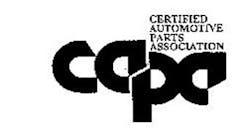Approved by CAPA’s Technical Committee in 2010, the CAPA 501 Bumper Parts Standard, like all other CAPA Standards, is based on true and complete comparative testing of an aftermarket part to the car company brand counterpart.
Like this article? Sign up for our enews blasts by clicking here.
In addition to requirements for material composition, mechanical properties (strength), construction features, fit and appearance, the CAPA 501 Standard also includes a series of full part dynamic crash tests. Test parts are mounted to a vehicle simulator and are crashed into a fixed, flat, rigid barrier at 5 mph. After the crash, high speed video and detailed graphs of the impact force and deceleration are used to compare the performance of the aftermarket part to the car company brand part. In addition, the amount of physical deformation is carefully examined and compared.
“While this testing is extensive (and the complete procedure is publically available), CAPA’s Board and Technical Committee wanted to insure that all performance characteristics were compared in detail to the car company brand parts,” says Jack Gillis, Executive Director of the Certified Automotive Parts Association. “We’re all familiar with the saying ‘If it looks like a duck, quacks like a duck, and swims like a duck, it’s a duck.’ While not particularly technical, that old expression explains the CAPA Certification philosophy. If an aftermarket part uses the same materials, construction features, dimensions and geometry as the car company brand part, then it can be expected to perform in a truly comparable manner to the car company brand part.
“Because of industry concerns about the safety-related aspects of structural parts, CAPA raised its own bar – we requested that the highly respected Insurance for Highway Safety conduct a series of high and low speed crashes. The sole purpose was to demonstrate the parts meeting the CAPA requirements will, in fact, perform in a comparable manner to the car company brand part in both high and low speed crashes. While this may appear to be an overly comprehensive requirement – crash testing is complex and costly – CAPA is committed to re-assuring both consumers and the collision repair industry about the performance of the parts it certifies,” says Gillis.
While CAPA 501 Bumper Parts Standard provides the industry with confidence in the use of a CAPA Certified bumper part, only one manufacturer has chosen to submit their parts to CAPA for Certification. Production Bumper Stampings Inc., (PBSI) a U.S. based manufacturer and member of the Diamond Standard Brand Group, has 29 CAPA Certified front bumpers representing over 40,000 parts available in the U.S. market.
“Going forward we anticipate the market will demand that even more of our bumper products become CAPA Certified,” says Mike O’Neal, President of PBSI and Diamond Standard. “As the only manufacturer certified by CAPA to meet the CAPA 501 Standards, we are prepared to meet that demand.”
“Unfortunately, the market is giving aftermarket manufacturers who produce structural bumper parts a mixed message,” states shop owner and CAPA Technical Committee Chairman Mike Schoonover. “In spite of bumper sawing demonstrations and videos of ‘exploding’ energy absorbers, shops are still using non-CAPA Certified bumpers and other structural parts – regardless of the risks. As long as our various industries accept the cheapest parts, there’s really no reason for those manufacturers to produce high quality CAPA parts, despite the stated concerns about potential safety issues. The good news, for those shops concerned about reducing repair costs and protecting their customers from poor quality parts, there is a CAPA alternative.”
For further information, contact [email protected].
The Certified Automotive Parts Association, founded in 1987, is the nation’s only independent, nonprofit, certification organization for automotive crash parts whose sole purpose it to ensure that both consumers and the industry have the means to identify high quality parts via the CAPA Quality Seal. CAPA is an ANSI accredited standards developer for competitive crash repair parts. For more information see CAPAcertified.org.
Subscribe to ABRN and receive articles like this every month….absolutely free. Click here.


